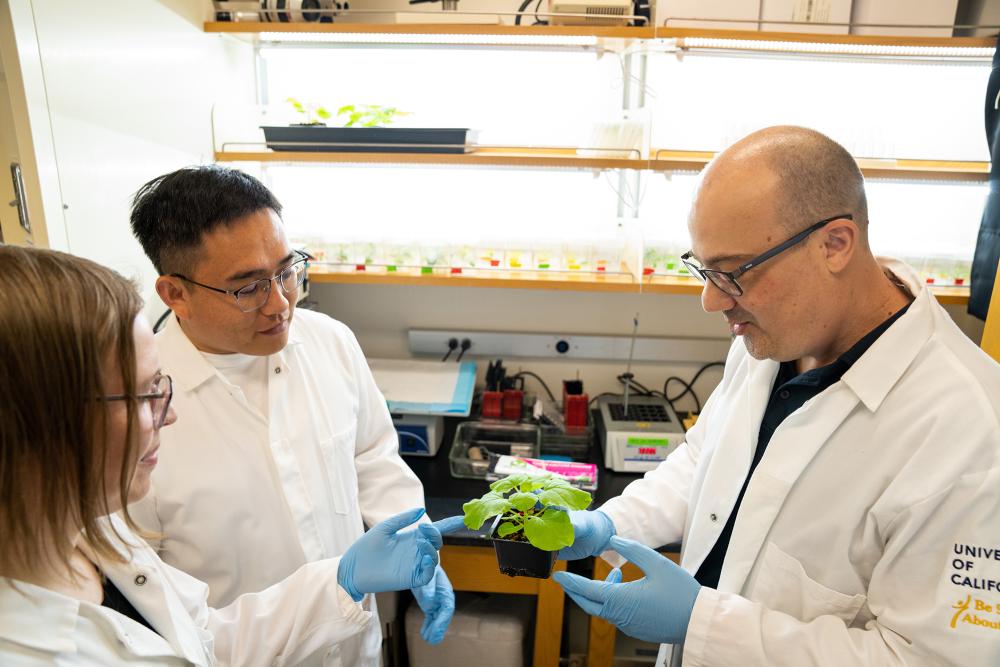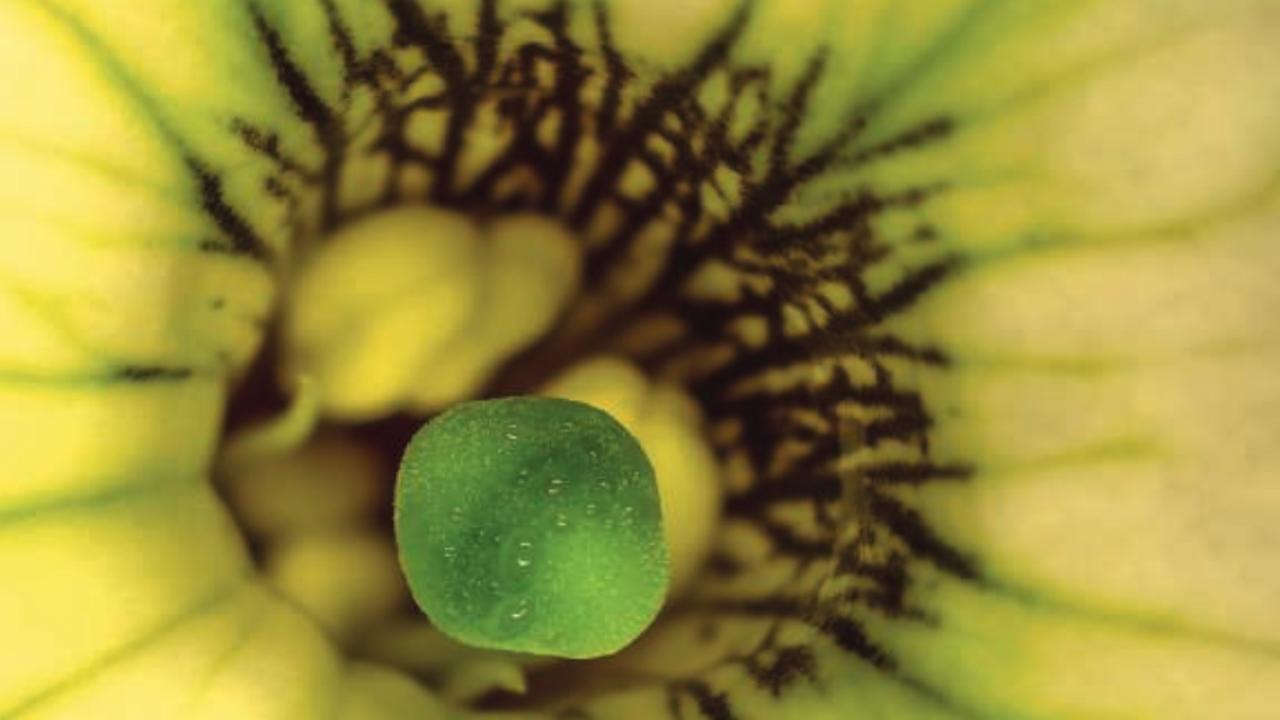Plants need to be able to communicate with themselves, for example sending signals from their leaves to their roots or flowers, so that they can coordinate growth and optimize resource use. They also need to communicate with other plants and organisms, which they achieve by releasing volatile organic compounds (VOCs), tiny molecules that are often associated with distinct smells. Scientists know a lot about how plants emit these odorous signals, however very little is known about how they receive and interpret them.
Now, a study coauthored by researchers at the University of California, Davis provides insights into how plants “smell.” By using a combination of genetics, biochemistry and structural biology, the researchers showed that petunia plants perceive molecular signals emitted by budding flowers via a receptor called KAI2. Without these receptors, the plants were unable to perceive signals sent out by their flower buds and their flowers had stunted development and produced fewer seeds. The work was published March 21 in Science.
“We know that flowering plants produce some VOCs as a defense or to attract pollinators,” said coauthor Nitzan Shabek, an associate professor in the Department of Plant Biology. “But it's interesting that these molecules are also related to internal plant communication.”
The study was a collaboration between Shabek’s structural biology and plant biochemistry lab and plant researchers at Purdue University. At UC Davis, Shabek worked alongside graduate student Angelica Guercio and postdoctoral fellow Fuai Sun.

Another role for plant smoke detectors
Shabek’s Purdue collaborators previously discovered that petunias “self-fumigate” with VOCs called terpenes when they flower, and that this fumigation is associated with the number of seeds that they go on to produce. However, they didn’t know how the petunias were perceiving these terpenes at the molecular level, or how this perception led to changes in seed production.
In the new study, the team used genetic methods to show that the petunia’s response to terpenes was related to changes in protein production that are usually associated with exposure to compounds in smoke called “karrikins.” This led them to investigate the karrikin-perceiving KAI2 receptors, which the Shabek Lab has been studying at the molecular level. Because KAI2 receptors are found in all land plants — including those that do not live in fire zones — researchers have speculated that they must play some other role, but that role was unknown until now.
Shabek’s structural and biochemical analysis revealed that petunias carry two classes of KAI2 receptor and that one is more important for terpene perception.
“Our study provides another layer to our understanding of KAI2 signaling,” said Shabek. “We found that one of the petunia’s KAI2 receptors is important for perceiving these hormone-like volatile compounds.”
From signaling to seeds
Using genetic engineering, the researchers showed that the plants required both KAI2 and the means of producing a specific terpene (germacrene-D) in order to develop stigmas and pistils (plant reproductive structures), which are necessary for seed production. Without functional KAI2 receptors, the plants produced only about a third to a half as many seeds per flower.
“When the KAI2 perceive these molecules, there is a cascade of events that eventually change the entire genetic architecture of the plant,” said Shabek. “One of these architectural changes is related to pistil and stigma development and can be traced all the way to the seeds.”
In future studies, Shabek plans to continue to investigate KAI2 receptors’ roles in plant signaling and other molecular functions, such as root sensing mechanisms that attract symbiotic soil fungi.
“We're going to continue exploring this pathway and try to investigate the different layers, from the molecular level to the plant level,” Shabek said.
The work is part of an ongoing collaboration with Natalia Dudareva of Purdue University. Additional authors on the study are: Shannon Stirling, Ryan Patrick, Xing-Qi Huang, Matthew Bergman, Varun Dwivedi, Ruy Kortbeek, Yi-Kai Liu, W. Andy Tao, Ying Li, and Benoît Boachon, all at Purdue University.
The work was supported by the National Science Foundation and the U.S. Department of Agriculture.
Media Resources
Volatile communication in plants relies on a KAI2-mediated signaling pathway (Science)
Plant Smoke Detectors Evolve as Hormone Sensors
Liana Wait is a freelance science writer based in Philadelphia. She has a Ph.D. in ecology and evolutionary biology and specializes in writing about the life sciences.
Adapted from an original article published by the College of Biological Sciences.
